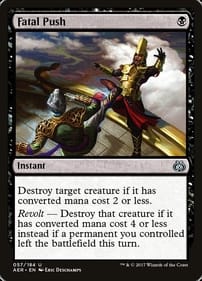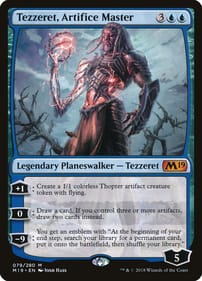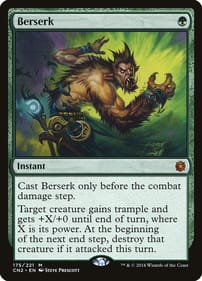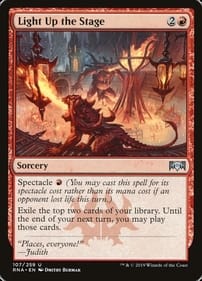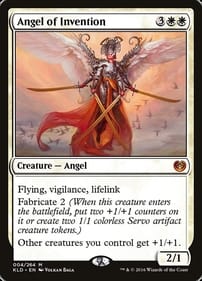Learn to Play the Pokemon Trading Card Game
Your guide to becoming a Pokémon Master—the ultimate beginners guide to the Pokemon TCG
Introduction
Welcome to the world of Pokémon TCG, where adorable creatures battle for glory and you—yes, YOU—are their Trainer. Whether you’re here because you love Pokémon or because a friend roped you in, one thing is clear: you want to learn to play, and you want to learn FAST.
This guide will take you step-by-step through the basics of the game, with humor, simplicity, and maybe even a few dad jokes (you’ve been warned). By the time you’re done, you’ll know exactly how to shuffle, strategize, and shout, “Pikachu, I choose you!” with confidence. Let’s jump in!
The Basics (Or: What Are These Cards?)
Before you can start slinging cards like a pro, you need to know what you’re holding. Let’s break it down into bite-sized chunks that are easier to digest than a Snorlax-sized meal.
1. Pokémon Cards
These are your fighters, your champions, your little buddies. They’ll be doing the battling while you sit back and mastermind your victory.
-
Basic Pokémon: Ready to jump into battle right away. Think of them as your starting lineup.
charmander-007-091-scarlet-violet-paldean-fates
-
Evolution Pokémon: The upgraded versions of your Pokémon. Evolution takes your squad from “cute and cuddly” to “fearsome and fierce.”
-
Example: Charmander evolves into Charmeleon and then into Charizard. It’s like leveling up your favorite video game character!
Charmeleon-005-165-scarlet-violet-151
charizard-ex-006-165-scarlet-violet-151
Fun Tip: Basic Pokémon are mandatory to start the game. No Basic Pokémon = you’ll have to reshuffle your hand, and your opponent gets a free card. Awkward.
2. Energy Cards
These are like your Pokémon’s fuel. Without Energy, your Pokémon are like cars with an empty tank—pretty to look at but not going anywhere.
-
Attach Energy to your Pokémon so they can attack.
-
Different Pokémon need different types of Energy. A Fire Pokémon, for example, needs Fire Energy to unleash its blazing fury.
Pro Tip: Don’t overstuff your deck with Energy cards. Think of it like a balanced diet for your deck—you need just enough to keep your Pokémon fighting without missing out on the fun stuff.
3. Trainer Cards
These are your secret weapons. Trainer cards come in three flavors:
-
Item Cards: Quick effects to give you a boost.
-
Example: “Potion” heals damage on your Pokémon. It’s basically their spa day.
-
As many of these you want can be used per turn.
-
Supporter Cards: Powerful effects, but you can only use one per turn.
-
Example: “Professor’s Research” lets you discard your hand and draw 7 cards.
-
These can only be used once per turn.
professors-research-087-091-scarlet-violet-paldean-fates
-
Stadium Cards: Environmental effects that affect both players.
-
Example: “Training Court” lets you retrieve Energy from your discard pile.
-
Only one can be on the field at once. If another is played it will destroy the current one.
training-court-282-264-sword-shield-fusion-strike
Pro Tip: Always read Trainer cards carefully. Misusing one can cost you the game—or at least your dignity.
4. Key Vocabulary (Don’t Worry, There’s No Pop Quiz!)
Here are some words you’ll hear a lot while playing Pokémon TCG:
-
HP (Hit Points): How much damage a Pokémon can take before fainting. When it hits zero, it’s time to send in reinforcements.
-
Attack: The moves your Pokémon can use to deal damage. These usually require Energy cards.
-
Retreat Cost: The price you pay to swap your Active Pokémon with one on your Bench. Pro Tip: Always check your Pokémon’s Retreat Cost before committing them to battle—it’s embarrassing to be stuck with a Magikarp you can’t retreat.
-
Weakness/Resistance: Some Pokémon take extra damage from specific types. For example, Water Pokémon hit Fire Pokémon like a tidal wave. Plan accordingly!
Anatomy of a Pokémon Card
“Think of your Pokémon card like a mini Pokédex entry: every piece of info on it is vital for your battles!”
Let’s break down the parts of a Pokémon card, so you’ll feel like a true Professor when analyzing your deck.
1. Pokémon Name
-
Right at the top of the card, this is the name of your Pokémon. Simple, right?
-
Example: “Pikachu” or “Snorlax.” Sometimes you’ll see special versions like “Galarian Meowth” or “Alolan Ninetales.”
Pokédex Perspective: “When you look up Pikachu, it’s the first thing you see—its name! Same with your card.”
2. Evolution Stage
-
In the top left corner, you’ll see what stage the Pokémon is at:
-
Basic: Ready to battle right away.
-
Stage 1: Needs to evolve from a Basic Pokémon.
-
Stage 2: Needs to evolve from a Stage 1 Pokémon.
-
Example: A Charizard card will say “Evolves from Charmeleon,” showing its evolutionary path.
Pokédex Perspective: "Think of this as the evolution tree in your Pokédex—each Pokémon builds on the last."
3. HP (Hit Points)
-
Found at the top right corner, HP tells you how much damage your Pokémon can take before fainting.
-
More HP = tougher Pokémon.
-
Example: Pikachu might have 60 HP, but Snorlax could have a massive 150 HP!
Pokédex Perspective: “When you check your Pokémon’s stats in the Pokédex, HP is like its stamina—it’s how much fight it has left.”
4. Type
-
Right under the Pokémon’s name, you’ll see a little icon showing its type.
-
Types include Grass, Fire, Water, Lightning, Psychic, Fighting, Darkness, Metal, Dragon, and more.
-
Your Pokémon’s type is important for Weakness and Resistance (more on that later).
Pokédex Perspective: “Just like in the Pokédex, a Pokémon’s type gives you clues about what it’s strong or weak against. Fire melts Ice; Water drenches Fire—it’s science!”
5. Abilities
-
Some Pokémon have Abilities, which are special powers that can give you an edge.
-
Found near the middle of the card, an Ability is separate from regular attacks. It might let you draw extra cards, heal damage, or power up your other Pokémon.
-
Example: Snorlax’s Ability, “Gormandize,” lets you draw extra cards if it’s in the Active spot.
Pro Tip: Abilities are usually passive and don’t require Energy—make the most of them!
Pokédex Perspective: “Abilities are like the quirky traits you read about in a Pokédex—stuff like, ‘Charizard’s flames can melt boulders!’ Except here, they’re useful in battle.”
6. Attacks
-
This is where the action happens. In the middle of the card, you’ll find your Pokémon’s attacks. Each attack includes:
-
Name: The name of the move. Think "Thunderbolt" or "Flamethrower."
-
Energy Cost: Symbols that show how much Energy you need to use the attack.
-
Damage: A number showing how much hurt this attack dishes out.
-
Effect: Some attacks have special effects, like paralyzing the opponent or healing your Pokémon.
Pokédex Perspective: “It’s like the move set you’d see in the Pokédex—‘Charizard uses Fire Spin, dealing massive damage!’”
7. Weakness and Resistance
-
Found at the bottom left of the card:
-
Weakness: A type that your Pokémon takes extra damage from.
-
Example: A Grass Pokémon might have a Weakness to Fire ×2, meaning Fire attacks do double damage.
-
Resistance: A type that your Pokémon takes less damage from.
-
Example: A Flying-type Pokémon might resist Fighting moves, reducing damage.
Pokédex Perspective: “It’s like knowing what terrain or opponents your Pokémon is best suited for. Don’t send a Bug Pokémon to fight a Fire-type—unless you like roasted Butterfree.”
8. Retreat Cost
-
In the bottom right corner, the Retreat Cost tells you how much Energy you’ll need to swap your Active Pokémon for one on your Bench.
-
Example: A nimble Pokémon like Joltik might have no Retreat Cost, but a tanky Snorlax might need 4 Energy to retreat.
Pokédex Perspective: “Think of it as how agile or slow your Pokémon is—some are fast as lightning, others need a little push to move.”
9. Rarity Symbol (Optional Bling)
-
In the bottom right corner, you’ll see a symbol that shows how rare the card is:
-
Circle: Common
-
Diamond: Uncommon
-
Star: Rare
-
Fancy holofoil cards or gold borders? That’s just showing off.
Quick Recap of the Card Anatomy
-
Name: Top center—who’s this Pokémon?
-
Evolution Stage: Top left—Basic, Stage 1, or Stage 2?
-
HP: Top right—how tough is it?
-
Type: Under the name—Grass, Fire, Water, etc.
-
Abilities: Special powers that are always active.
-
Attacks: Moves it can use in battle.
-
Weakness/Resistance: Bottom left—watch out for tough matchups!
-
Retreat Cost: Bottom right—how much Energy to swap it out?
-
Rarity Symbol: Bottom corner—how flashy is your card?
Setting Up the Game
“It’s time to go from holding cards to commanding a battlefield. Let’s set everything up so your first game is smooth and fun!”
pokemon-playmat-abra-evolutions-copy
What You’ll Need
Before diving in, make sure you have:
-
A 60-card deck (no more, no less—it’s a hard rule).
-
A coin or dice to determine who goes first and for resolving abilities.
-
Damage counters to track how much hurt your Pokémon have taken. (Dice work perfectly!)
-
A playmat (optional, but it makes you look like a pro).
-
A friend or opponent. Pokémon battles are a team sport!
Step 1: Flip a Coin to Decide Who Goes First
Before anything else, decide who will go first:
-
Flip a coin or roll a dice.
-
Heads or even number: You go first!
-
Tails or odd number: Your opponent goes first.
Important: If you go first, you won’t be able to attack on your first turn. This gives the second player a slight advantage in making the first strike.
Step 2: Shuffle and Draw
-
Shuffle your deck thoroughly. No sneaky peeking—looking at your cards is bad form!
-
Draw 7 cards from the top of your deck. These will be your starting hand.
Step 3: Find a Basic Pokémon
-
Look at your starting hand for a Basic Pokémon.
-
Choose one Basic Pokémon to be your Active Pokémon. Place it face down in the center of your play area.
-
This is your lead fighter, the star of your starting lineup!
-
If you have more Basic Pokémon, place up to 5 of them face down on your Bench as backup fighters.
What if you don’t have any Basic Pokémon?
-
No problem! Show your hand to your opponent, shuffle it back into your deck, and draw 7 new cards. Your opponent gets to draw one extra card as compensation.
Pro Tip: Having a good balance of Basic Pokémon in your deck ensures you’re not caught without any at the start.
Step 4: Set Aside Prize Cards
-
Take the top 6 cards from your deck and place them face down in a separate pile. These are your Prize Cards.
-
Every time you knock out one of your opponent’s Pokémon, you’ll take a Prize Card. Collect all 6 to win the game!
Pokédex Perspective: “Think of Prize Cards as your rewards for knocking out opposing Pokémon—it’s like earning XP in the video game.”
Step 5: Reveal Your Setup
-
Once both players have placed their Active and Bench Pokémon, flip them face up to reveal your lineup.
-
Your battlefield is now set and ready for battle!
Step 6: Start the Game!
The first player begins their turn. Here’s a sneak peek of what happens during a turn:
-
Draw a card to start.
-
Attach Energy, play Trainer cards, or evolve Pokémon.
-
Attack (if you’re not the first player) or pass the turn.
Quick Recap: Setting Up
-
Flip a coin to decide who goes first.
-
Shuffle your deck and draw 7 cards.
-
Find a Basic Pokémon for your Active spot and Bench.
-
Place 6 cards as Prize Cards.
-
Reveal your Pokémon, and you’re ready to go!
Turn Sequence
“Your turn is where all the action happens—drawing cards, powering up your Pokémon, and unleashing epic attacks! Let’s break it down step by step.”
A turn in the Pokémon TCG flows in five distinct phases. Follow these steps each turn to keep the game running smoothly and (most importantly) to crush your opponent!
1. Draw a Card
Every turn starts the same way:
-
Draw one card from the top of your deck. Add it to your hand.
-
This gives you more options as the game progresses.
Pro Tip: Don’t forget to draw a card! Skipping this step is a common beginner mistake, and it could cost you valuable resources.
2. Play Cards from Your Hand
Now it’s time to strategize. You can:
-
Attach Energy:
-
Once per turn, you can attach one Energy card from your hand to any of your Pokémon (Active or on your Bench).
-
Without Energy, your Pokémon can’t attack—so think of this as fueling up your team.
-
Evolve Your Pokémon:
-
If you have a Stage 1 or Stage 2 card in your hand, you can evolve one of your Pokémon in play.
-
Example: Evolve your Charmander into Charmeleon for more powerful attacks.
-
You can’t evolve a Pokémon the same turn it was put into play, though. They need a moment to “settle in.”
-
Play Trainer Cards:
-
Use Item cards as often as you like.
-
Use Supporter cards once per turn (these are super strong!).
-
Play Stadium cards to change the battlefield for both players.
Pro Tip: There’s no “correct” way to play cards from your hand—experiment and find what works best for your deck and strategy!
3. Retreat Your Active Pokémon (Optional)
-
If your Active Pokémon is taking too much damage or isn’t a good matchup, you can retreat it and send a Pokémon from your Bench into battle.
-
To retreat, pay the Retreat Cost in Energy (shown at the bottom right of the card) by discarding Energy from your Active Pokémon.
-
Switch out your Active Pokémon with one from your Bench.
Pro Tip: Don’t retreat unless you absolutely need to—those discarded Energy cards might be hard to replace!
4. Attack!
Now for the fun part: attacking your opponent’s Active Pokémon! Here’s how:
-
Check Your Energy:
-
Make sure you have enough Energy attached to your Active Pokémon to use one of its attacks.
-
Example: If Pikachu’s “Thunderbolt” attack costs 3 Lightning Energy, you’ll need at least 3 Lightning Energy attached to Pikachu.
-
Choose Your Attack:
-
Announce which attack you’re using.
-
If the attack has any special effects (like Paralyzing or drawing cards), resolve those now.
-
Apply Damage:
-
Subtract the opponent’s Pokémon’s Resistance (if any) from your attack’s damage.
-
Multiply damage for Weakness if applicable.
-
Place damage counters on the opponent’s Pokémon equal to the final damage.
-
Knockout Check:
-
If the opponent’s Pokémon’s HP drops to 0, it’s knocked out. Move it (and any attached cards) to the discard pile.
-
Take one of your Prize Cards as a reward.
Pro Tip: Pay attention to Weakness and Resistance—it can turn a close match into a crushing victory!
5. End Your Turn
Once you’ve attacked (or chosen not to), your turn ends. Pass the action to your opponent and prepare for their counterattack.
A Turn in Action: A Quick Example
Here’s what a single turn might look like:
-
Draw a Card: You draw a Lightning Energy.
-
Attach Energy: You attach the Lightning Energy to your Pikachu.
-
Play a Trainer Card: You use “Professor’s Research” to discard your hand and draw 7 new cards.
-
Attack: Pikachu uses “Electro Ball,” which deals 60 damage to the opponent’s Charmander.
-
End Turn: You’re done—time to see how your opponent responds!
How to Win!
“Victory in the Pokémon TCG isn’t just about luck—it’s about strategy, skill, and a sprinkle of good fortune. Let’s talk about how to win (and how to not lose).”
How to Win
There are three ways to win a game of Pokémon TCG. Keep your eyes on these goals, and you’ll be shouting “Victory!” in no time.
1. Collect All Six Prize Cards
Every time you knock out one of your opponent’s Pokémon, you get to take a Prize Card. Collect all six Prize Cards, and you win!
-
Example: Your Pikachu knocks out an opponent’s Charmander. You grab one of your six Prize Cards—like leveling up in a video game!
-
Why It’s Great: This is the most common win condition and keeps the battle exciting as you trade blows with your opponent.
2. Opponent Runs Out of Pokémon
If your opponent has no Pokémon left on their Bench and their Active Pokémon is knocked out, they lose automatically.
-
Example: Your opponent’s Active Pokémon gets KO’d, and their Bench is empty. That’s it—they’re out of the game!
-
Why It’s Great: It’s a swift and decisive way to end the match if your opponent isn’t prepared with enough Basic Pokémon.
3. Opponent Runs Out of Cards in Their Deck
If your opponent can’t draw a card at the start of their turn because their deck is empty, they lose immediately.
-
Why It’s Great: This is a rare but strategic way to win by forcing your opponent to burn through their cards. Some decks are designed to make this happen!
Key Strategies to Secure the Win
-
Plan Your Attacks: Always know which Pokémon on your team can knock out your opponent’s Pokémon quickly and efficiently.
-
Protect Your Bench: Your Bench is your backup squad—keep them safe from surprise attacks!
-
Play to the Weaknesses: Target Pokémon that are weak to your Active Pokémon’s type for maximum damage.
-
Example: If you’re using a Water Pokémon against a Fire Pokémon, you’ll deal double damage!
-
Manage Your Resources: Don’t burn through cards too quickly—pace yourself so you don’t run out of options later in the game.
When You Lose (It Happens!)
Sometimes your opponent will outplay you, and that’s okay! Every loss is a chance to learn and improve.
-
Reflect on Your Deck: Did you have the right mix of Pokémon, Energy, and Trainer cards?
-
Think About Strategy: Did you focus too much on one Pokémon and leave your Bench vulnerable?
-
Don’t Take It Personally: Even the best Trainers lose—it’s all part of becoming a Pokémon Master.
Section 5: Pro Tips for Beginners
“Even the greatest Pokémon Masters started as beginners. These tips will help you avoid common mistakes and step up your game!”
1. Balance Your Deck
A great deck is all about balance.
-
Aim for a mix of Pokémon, Energy, and Trainer cards—too much of one can leave you stuck.
-
Example: Around 20 Pokémon, 25 Trainer cards, and 15 Energy is a solid starting point.
-
Include Pokémon that work well together, like a Basic Pokémon and its Evolutions.
Pro Tip: Test your deck before a big game—what looks good on paper might not work as well in battle!
2. Always Have Backup Pokémon
Your Bench is your safety net.
-
Never rely on just one strong Pokémon—it might get knocked out unexpectedly.
-
Keep your Bench full of Basics that can evolve or jump in when needed.
Pro Tip: Even if your Bench Pokémon can’t attack yet, they’re great for stalling while you rebuild your strategy.
3. Don’t Forget Weakness and Resistance
-
Exploit your opponent’s Pokémon’s Weakness to deal double damage.
-
Example: Water Pokémon crush Fire Pokémon with ease.
-
Keep track of your own Pokémon’s Weakness to avoid being taken down too easily.
Pro Tip: Learn the type chart—it’s a game-changer!
4. Use Your Trainer Cards Wisely
Trainer cards can turn the tide of a game, but timing is everything.
-
Use Item cards as needed, but don’t waste them on minor gains.
-
Save Supporter cards for when you need a big move—they’re limited to one per turn.
-
Deploy Stadium cards to disrupt your opponent’s plans.
Pro Tip: Always read your Trainer cards carefully. Missing a key detail can lead to costly mistakes.
5. Manage Your Energy Carefully
-
Only attach one Energy card per turn, so plan ahead.
-
Don’t overload a single Pokémon with Energy—it might get knocked out and leave you scrambling.
-
Use Energy retrieval cards to recycle Energy from your discard pile.
Pro Tip: Some Pokémon attacks require Colorless Energy, which can be filled by any Energy card. Keep that flexibility in mind!
6. Know When to Retreat
Retreating isn’t admitting defeat—it’s strategy!
-
If your Active Pokémon is weak or close to fainting, retreat it to protect it.
-
Plan ahead for the Retreat Cost, and make sure you have Energy to spare.
Pro Tip: Pokémon with a low or zero Retreat Cost are great for quick swaps—keep a few in your deck.
7. Keep an Eye on Your Opponent
-
Watch their Bench for Pokémon they’re powering up—you might need to prepare for a big attack.
-
Track their Prize Cards. If they’re close to winning, play more defensively.
Pro Tip: Pay attention to how many cards your opponent has left in their deck. You might win by outlasting them!
8. Practice Makes Perfect
The more you play, the better you’ll get.
-
Start with casual games to get comfortable with your deck and the rules.
-
Don’t be afraid to ask experienced players for advice—they’ve been where you are.
Pro Tip: Your local game shop (like Event Horizon Hobbies!) is a great place to find friendly players and practice matches.
9. Stay Calm and Have Fun
It’s easy to feel overwhelmed in your first games, but remember: Pokémon TCG is about having fun!
-
Celebrate your victories and learn from your losses.
-
Focus on improving your strategy one step at a time.
Pro Tip: Keep a mental checklist during your turn—did you draw a card? Attach Energy? Play Trainers? Small habits make a big difference!
Final Words: Be the Very Best (Like No One Ever Was!)
Congratulations, Trainer! You’ve made it through the essentials of playing the Pokémon Trading Card Game. You now know how to set up a game, take turns, strategize, and even pull off some pro-level moves. That’s no small feat—Ash had to travel through multiple regions and deal with Team Rocket for years to get where you are now!
What’s Next?
Now that you’re ready to battle, here are some ideas to take your Pokémon TCG journey even further:
-
Practice, Practice, Practice: The best way to learn is by playing! Start with friendly matches against other beginners and build your confidence.
-
Experiment with Decks: Try out new cards, strategies, and combinations to discover your unique playstyle.
-
Join Events: Check out tournaments, leagues, and learn-to-play sessions at your local game store (like Event Horizon Hobbies!). It’s a great way to meet other Trainers and level up your skills.
-
Stay Curious: New Pokémon cards are released regularly, bringing fresh mechanics, exciting strategies, and amazing artwork. Stay up-to-date and keep your decks evolving!
Search EHH website for new Products Daily! We have a vast collection of individual singles, Packs, Products, Accessories and more Visit eventhorizionhobbies.com !
Your Pokémon Journey Awaits!
Remember, Pokémon TCG isn’t just about winning (though that part’s fun too). It’s about the thrill of the game, the joy of meeting other players, and the creativity of building decks that reflect your personality. Every match is a new adventure, and every card tells a story.
So grab your cards, gather your friends, and get ready to battle. Whether you’re aiming to become a local champion or just want to enjoy some epic matches, the Pokémon Trading Card Game will always have something exciting waiting for you.
From all of us at Event Horizon Hobbies—Good luck, have fun, and may your decks always be stacked with amazing pulls!
One last thing:
COME LEARN AT EHH, We have weekly Learn to Play days Every Saturday
pokemon-tcg-youth-league-ticket-30


